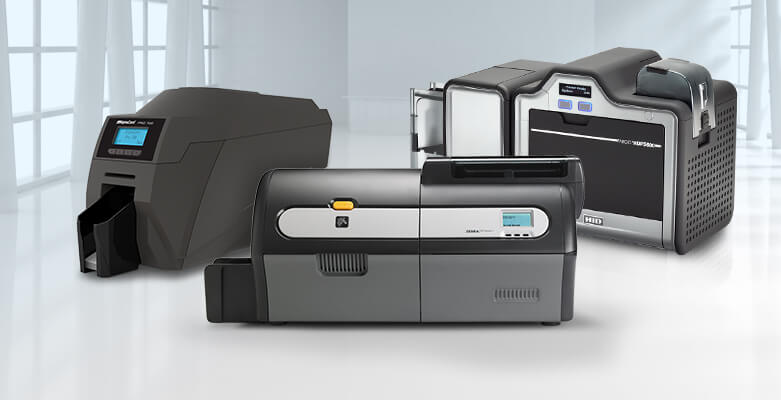ID card printers come in a wide range of styles and features, many with optional upgrade options so you can customize the printer to meet your specific organization’s needs. But what are all your options, and which ones do you need?
Single vs. Dual-Sided
The most common way to separate printers by feature is single-sided vs. dual-sided printing. Does the printer only print on a single side of the card, or does it automatically flip the card and print on the back side?
Some single-sided printers cannot be upgraded to dual-sided printing (mostly entry-level printers), but many models can be upgraded when you purchase the printer OR later on using an upgrade kit.
Card Encoding
The second way many people categorize printers is by their encoding options. All of our ID card printers can print a barcode, and most of them can be upgraded to encode magnetic stripe cards too.
But if you are looking to encode smart cards with MIFARE, DESFire, iCLASS, and other smart card technologies, your options will be more limited. And both magnetic stripe and smart card encoding are difficult to add after you’ve purchased the printer, so you’ll want to decide on your encoding style before you buy.
Hopper Size
One printer feature that can greatly improve the ease of use is hopper size – how many blank cards can you load and print before you need to stop to load more? If you need to print large numbers of cards at a time, hopper size is an important consideration!
The Evolis Quantum has the largest hoppers, with a 500 card input hopper and 500 card output hopper. But some printers do allow you to upgrade to larger hopper sizes than the 50-100 card hoppers they come with so you can more easily batch print.
Other Options
What other factors should you consider when purchasing an ID card printer?
- Print technology – reverse transfer printers create higher-quality, longer-lasting cards, but they are more expensive than dye sublimation printers
- Lamination – the best option for longer-lasting cards, some higher-end printers have lamination upgrades you can add
- Connectivity – every printer can connect to your computer via USB and many models now come standard with Ethernet as well, but some models do have WiFi connectivity upgrades for wireless offices
So How Should You Choose?
The first step to buying an ID card printer is to actually decide what you will use the cards for, and how you want them to look – those decisions will influence every choice and upgrade you make on the printer. Knowing you want dual-sided cards with smart card encoding to act as access control, cashless payment, and employee IDs will help you narrow down your printer options to only the models with the features you need.
Not sure where to start? Answer some basic questions with our ID System Selector for some recommendations to get you started, and one of our ID experts will reach out to help!





